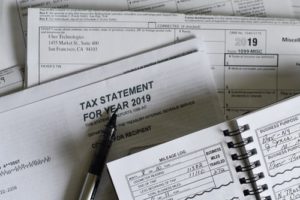05.15.20
Opportunity Zones and Tax Benefits
Opportunity Zones and Tax Benefits

Opportunity Zones were created in 2017 to revitalize economically distressed communities using private investments rather than taxpayer dollars. To stimulate and encourage participation, taxpayers who invest in Opportunity Zones are eligible to benefit from three main incentives: deferral of capital gains, partial exclusion of deferred gain, and/or exclusion of additional gains.
In this comprehensive white paper I will discuss the different government entities involved in Opportunity Zones and Tax Benefits and what role they play in assisting low-income communities.
Key areas that will be discussed include:
-
- What is an Opportunity Zone?
- How were Opportunity Zones created?
- When were Opportunity Zones created?
- What is the purpose of Opportunity Zones?
- How do Opportunity Zones spur economic development?
- What is a qualified Opportunity Fund?
- Do you need to live in an Opportunity Zone to take advantage of the tax benefits?
What are Opportunity Zones & How they were created?

As mentioned previously, Opportunity Zones and Tax Benefits were created by congress to revitalize distressed communities. In more detail, Opportunity Zones are census tracts that qualify for the Opportunity Zone designation according to the criteria outlined in the 2017 Tax Cuts and Jobs Act.
Opportunity Zones have been designated in all 50 states in the US, the District of Columbia, and five US possessions (American Samoa, Guam, Northern Mariana Islands, Puerto Rico, and the Virgin Islands). Fun fact, all of Puerto Rico falls has been designated as an Opportunity Zone.
When qualified as an Opportunity Zone, areas retain their designation for ten years. Only 25% of low-income neighborhoods that meet the income qualification in each state, district, or territory can be designated as Opportunity Zones. If states, territories, and districts have fewer than 100 census tracts, up to 25 census tracts can be designated.
Opportunity Zones were created through a nomination and designation process. US states and territories were given until April 2018 to nominate qualifying census tracts in their jurisdictions for Opportunity Zone designation. The following low-income requirements must be meet as defined by the U.S. Department of Treasury Internal Revenue Service:
-
- Poverty rate of at least 20%
- Median family income of:
-
- No more than 80% of the statewide median family income for census tracts within non-metropolitan areas.
- No more than 80% of the greater statewide median family income or the overall metropolitan median family income for census tracts within metropolitan areas.
-
Up to 25% of the census tracts of each jurisdiction that met these criteria could be nominated. An additional 5% of each jurisdiction could qualify if they met a different set of income and geographic qualifications:
-
- No more than 80% of the statewide median family income for census tracts within non-metropolitan areas.
- No more than 80% of the greater statewide median family income or the overall metropolitan median family income for census tracts within metropolitan areas.
Within these criteria, 57% of all neighborhoods in America were up for consideration as Opportunity Zones, according to the Brookings Institute. In June 2018, the US Treasury certified (8,700) those that met the legislation’s criteria as Opportunity Zones. This is roughly 12% of all census tracts in the US.
What is a qualified Opportunity Fund?

QOF
A qualified Opportunity Fund (QOF) is an investment vehicle that is set up as either a partnership or corporation for investing in eligible property that is located in a qualified Opportunity Zone and utilizes the investors gain from a prior investment for funding the Opportunity Fund.
The basics of a QOF include timing, assets, testing, and types.
Timing – Investors have 180 days from date of capital gain event to reinvest into a QOF. Capital gain realized by flow-through entity (partnership or S corp), owners have additional 180-day window beginning on last day of entity’s taxable year.
Asset – The QOF fund must hold at least 90% of assets in Qualified Opportunity Zone Business (QOZB) property. Investors can still hold qualified property directly.
Testing – Testing happens twice per year.
Types – Opportunity Fund must be domestic corporation or partnership (cannot be a disregarded entity). There is no limit on the number of qualified Opportunity Fund’s that can be created.
QOZB
Qualified Opportunity Zone Business (QOZB) is an entity classified as a corporation or partnership that is owned by a QOF that, among other things, operates the qualifying business.
To qualify as a QOZB you must meet the five criteria below.
-
- 70% Tangible Property Test – Substantially all (70%) of its tangible property (whether owned or leased) is a QOZB property.
- Intangible Test – A substantial portion of its intangible property must be used in active conduct of its business in an Opportunity Zone.
- Gross Income Test – At least 50 percent of its gross income must be derived from the active conduct of a trade or business.
- 5% NQFP Test – No more than 5 percent of the average unadjusted basis of its assets may consist of “non-qualified financial property” (NFQP)
-
- No Sin Business – Cannot be a golf course, country club, massage parlor, hot tub facility, suntan facility, racetrack or other gambling facility, or any store the principal business is the sale of alcoholic beverages for consumption off-premises.
QOZB Property Test
-
- New Property Test – It is acquired by purchase from an unrelated party (using a 20% related party standard) after December 31, 2017
- Qualifying Asset Test – The “original use” in the qualified opportunity zone (QOZ) commences with he QOZB or the QOZB substantially improves the property.
- Substantially All Test – During substantially all the holding period for such property, substantially all the use of such property is in a QOZ.
The main goal of an Opportunity Zones and Tax Benefits is to connect low-income communities with much needed capital. Investors have the option of dedicating all or a portion of their winnings to seeding the next generation of enterprise in distressed communities across the country. In exchange investors get federal tax incentives tied to long-term holdings.
Tax Incentives

There are three main tax incentives that investors can benefit from by investing in Opportunity Zones: deferral of capital gain, partial exclusion of deferred gain, and exclusion of additional gains.
- Deferral of capital gain (up to 8 years of deferral) – With time value of money – Deferral of capital gains lasts until the earlier of:
A. Date of the investment is sold or exchanged; or
B. December 31,2026
Gain recognition in 2026 (or at earlier disposition)
C. Lesser of (1.) amount of deferred gain or (2.) current FMV (Fair Market Value
D. Less: the taxpayer’s basis in the fund.
- Partial exclusion of deferred gain (10-15%, 5-7 years) – Amount the can be excluded is determined by:
A. 10% if held for 5 years before 2026 or earlier disposition.
B. 15% if held for 7 years before 2026 or earlier disposition.
3. Exclusion of additional gains 100% 10+ years – If qualified Opportunity Zone Fund (QOF) interest has been held for 10 years, additional gain realized on disposition of OZ Fund interest (above the amount recognized in 2026) is tax free.
There are multiple layers to creating Opportunity Zones and Tax Benefits. There will be a national, institutional layer, where you have funds created through syndication working on large venture or real estate projects. You will also have the local mom and pop shops that need to raise $20,000. Both players are important to the business. You must identify your niche and get involved where you have the skills and act!
Kansas CIty has 74 designated Opportunity Zones, including 70 low-income communities, plus 4 non-low-income contiguous tracts. For more information on Kansas Opportunity Zones and Tax Benefits please click link below.
